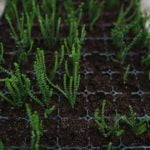Are you looking for ideas for small area landscaping? Transforming a tiny outdoor space into a beautiful and functional landscape can be a rewarding experience, and there are countless creative ways to make the most of limited square footage. In this article, we’ll explore various tips and techniques for maximizing the potential of small areas, from utilizing vertical space to choosing the right plants and incorporating decorative elements.
When it comes to small area landscaping, one of the key considerations is how to maximize the available space. By utilizing vertical space with trellises, hanging plants, and vertical gardens, you can create a lush and vibrant oasis even in a compact area. Container gardening also offers endless possibilities for creating a beautiful garden in small pots and containers, allowing you to get creative with plant arrangements and design.
In addition to planting strategies, hardscaping plays a crucial role in small area landscaping. From pathways to seating areas, incorporating hardscaping elements can add functionality and visual interest to your outdoor space. Choosing the right plants, creative edging techniques, lighting elements, and maintenance tips will all be highlighted as we explore the beauty of small area landscaping in detail throughout this article.
Maximizing Vertical Space
When working with a small area for landscaping, it’s important to maximize every inch of space available. One effective way to do this is by making use of vertical space. By utilizing trellises, hanging plants, and vertical gardens, you can create a lush and visually appealing outdoor environment that doesn’t require a lot of square footage.
Utilizing Trellises
Trellises are an excellent way to add height and visual interest to a small garden or outdoor space. They can be used to support climbing plants such as ivy, jasmine, or clematis, creating a beautiful natural wall that adds privacy and greenery. Additionally, trellises can be used to grow vegetables like tomatoes or cucumbers, maximizing the use of limited space by encouraging plants to grow upwards instead of outwards.
Hanging Plants
Hanging plants are another great option for adding greenery without taking up valuable ground space. By incorporating hanging baskets or pots filled with cascading plants like ferns, petunias, or succulents, you can create a vibrant and dynamic display that draws the eye upwards. This is especially beneficial for small patio areas or balconies where floor space may be limited.
Vertical Gardens
For those looking to take vertical gardening to the next level, vertical garden systems offer an innovative solution for small area landscaping. These systems typically consist of modular panels that can be mounted on walls or fences and planted with a variety of herbs, flowers, or even small vegetables. Not only do they add visual appeal and texture to a space, but they also provide an opportunity to grow fresh produce in non-traditional garden spaces.
By incorporating these techniques into your small area landscaping plans, you can make the most of limited space while still creating a beautiful and inviting outdoor environment. With careful planning and creative thinking, even the smallest outdoor areas can become thriving gardens full of life and color.
Container Gardening
Choosing the Right Containers
When it comes to container gardening, the type of pot or container you choose can make a big difference. Look for lightweight options if you plan on moving your containers around frequently, and make sure they have drainage holes to avoid waterlogged soil. Consider the size of your space and choose containers that fit well without overwhelming the area.
Plant Selection and Arrangement
Selecting the right plants is crucial to the success of your container garden. Opt for smaller varieties of flowers, herbs, and vegetables that are well-suited to confined spaces. Consider mixing different textures, heights, and colors to create an eye-catching display. Pay attention to how much sunlight your space receives and choose plants that thrive in those conditions.
Maintenance and Care
Proper maintenance is essential for keeping your container garden thriving. Be diligent about watering, as plants in containers may dry out more quickly than those in the ground. Regularly remove dead or wilted leaves and flowers to encourage new growth. Additionally, consider using a slow-release fertilizer to keep your plants healthy and vibrant throughout the growing season.
With these tips in mind, you can transform even the smallest outdoor area into a charming oasis filled with greenery and flowers through container gardening.
Small Area Hardscaping
When it comes to pathways in small area hardscaping, using materials such as gravel, pebbles, or stepping stones can help define the space and create a sense of movement. These materials are also practical because they allow water to permeate through them, preventing water buildup in small spaces.
For small patios in a limited area, consider using smaller-scale furniture to avoid overcrowding the space. Bistro sets or compact outdoor lounges are great options for creating a cozy outdoor gathering spot without overwhelming the area. Additionally, incorporating potted plants and vertical gardens can add greenery without taking up valuable floor space.
In terms of seating areas, built-in benches or wall-mounted seating can be great space-saving solutions that also contribute to the cohesive design of a small area landscaping project. By carefully planning the layout and choosing the right materials and furnishings, you can transform a tiny outdoor space into an inviting oasis for relaxation and entertainment.
| Hardscaping Element | Recommendation |
|---|---|
| Pathways | Use gravel or stepping stones for water permeability and visual interest |
| Small Patios | Opt for smaller-scale furniture like bistro sets or compact outdoor lounges |
| Seating Areas | Consider built-in benches or wall-mounted seating for space-saving solutions |
Choosing the Right Plants
When it comes to small area landscaping, choosing the right plants and shrubs is essential to maximize the limited space available. It’s important to select low-maintenance and space-saving options that will thrive in a confined area. Some popular ideas for small area landscaping include using dwarf varieties of trees and shrubs, as well as groundcover plants that spread horizontally rather than vertically.
One great option for small area landscaping is to incorporate edible plants into the design. Herbs such as basil, thyme, and rosemary can be grown in small containers or vertical gardens, providing both culinary utility and visual appeal. Additionally, fruit-bearing plants like strawberries or dwarf citrus trees can add a pop of color and functionality to a compact outdoor space.
Another key consideration when choosing plants for small area landscaping is their growth habits. Opting for slow-growing or clumping varieties will help prevent overcrowding and the need for frequent pruning. Additionally, selecting plants with varying textures, colors, and heights can add depth and visual interest to a limited area without overwhelming the space.
| Plant | Description |
|---|---|
| Dwarf Conifers | Compact evergreen trees that add structure and year-round greenery without taking up much space. |
| Sedum | Drought-tolerant succulents that form colorful carpets and require minimal maintenance. |
| Japanese Maple (dwarf variety) | A small ornamental tree with vibrant foliage that adds a pop of color without overwhelming a small garden. |
Creative Edging
When it comes to small area landscaping, creative edging can make a big difference in defining and beautifying your outdoor space. By using borders, rocks, and other edging materials, you can add visual interest and structure to your small garden or yard. Here are some creative ideas for edging that will enhance the beauty of your compact landscape:
1. Borders: One of the simplest ways to define your small area landscaping is by creating clear borders. This can be done with materials such as bricks, pavers, or even plants like low-growing hedges. Not only do borders add a sense of organization to your space, but they also help prevent grass or weeds from encroaching on your garden beds.
2. Rocks: Incorporating rocks into your small area landscaping can bring a natural and rustic touch to your outdoor space. You can use large rocks to create a border around garden beds or pathways, or place smaller rocks strategically between plants for added visual appeal.
3. Edging Materials: There are various edging materials available that can be used to define and separate different areas within a small landscape. From metal or plastic lawn edging to wooden logs or concrete blocks, the options are endless. Consider using contrasting colors and textures to add dimension and character to your outdoor space.
By implementing these creative edging ideas into your small area landscaping design, you can effectively define different areas within your space while adding visual interest and charm. Whether you opt for traditional borders, natural rock features, or unique edging materials, these elements will help beautify and enhance the overall look of your compact outdoor oasis.
Lighting and Decor
Strategic lighting and decorative elements play a crucial role in enhancing the ambiance of small area landscaping. When working with limited space, it’s important to carefully consider the placement of lighting fixtures and decorative elements to make the most impact.
One idea for small area landscaping is to incorporate solar-powered LED lights along pathways or around seating areas. These lights not only add a charming touch to the landscape but also provide much-needed illumination during the evening hours. Additionally, string lights can be used to create a cozy and inviting atmosphere, especially in small patios or urban gardens.
In terms of decorative elements, small area landscaping often benefits from the use of mirrors to create the illusion of a larger space. Placing mirrors strategically can reflect natural light and visually expand the area. Another idea is to include functional yet aesthetically pleasing elements such as water features or bird baths, which add both visual interest and a sense of tranquility to small outdoor spaces.
The key is to strike a balance between functionality and aesthetics when incorporating lighting and decorative elements into small area landscaping. By carefully selecting and placing these features, it’s possible to transform even the tiniest outdoor spaces into stunning and inviting landscapes that can be enjoyed day or night.
Maintenance Tips
When it comes to maintaining a small area landscaping, it’s important to keep things simple and manageable. Here are some maintenance tips for keeping your small area looking its best:
1. Regular Watering: Since space is limited, it’s crucial to ensure that plants in containers or small beds are adequately watered. Consider installing a drip irrigation system or hand watering with a hose or watering can.
2. Pruning and Trimming: Keep your plants looking neat and tidy by regularly pruning and trimming them. This not only keeps them healthy but also prevents overcrowding in a small space.
3. Weeding: Stay on top of weeds by regularly inspecting your garden and removing any unwanted growth. Mulching can also help suppress weed growth while adding visual appeal to the landscape.
4. Fertilizing: Small areas may deplete soil nutrients quicker, so be sure to fertilize your plants as needed to keep them healthy and vibrant.
5. Pest Control: Monitor for pests and diseases, and address any issues promptly before they become a larger problem.
6. Cleanliness: Regularly sweep pathways, patios, and seating areas to keep the overall look of the space clean and inviting.
Remember that with proper care and maintenance, your small area landscaping can continue to thrive and bring joy for years to come.
Conclusion
In conclusion, landscaping in small areas can be a rewarding and fulfilling experience. By implementing the ideas for small area landscaping discussed in this article, it is possible to transform even the tiniest of spaces into stunning landscapes. Whether it is maximizing vertical space with trellises and hanging plants, creating lush gardens in containers, or incorporating pathways and seating areas, there are countless ways to beautify small outdoor spaces.
One of the most exciting aspects of small area landscaping is the opportunity for creativity and innovation. With limited space, every plant, pathway, and decorative element must be carefully chosen and strategically placed. This presents an opportunity for individuals to showcase their unique style and design aesthetic. Small area landscaping also encourages resourcefulness and out-of-the-box thinking when it comes to utilizing vertical space, choosing the right plants, and incorporating decorative elements.
Furthermore, caring for a small landscaped area can be less time-consuming compared to maintaining a larger garden. With proper maintenance tips such as watering schedules, pruning techniques, and soil care, individuals can enjoy their stunning small landscapes with minimal effort. Ultimately, the satisfaction of transforming a compact outdoor space into a beautiful oasis makes small area landscaping an incredibly rewarding endeavor.
Frequently Asked Questions
How Do You Landscape a Small Area?
Landscaping a small area requires careful planning to maximize the space available. Consider using smaller plants and trees, as well as container gardening to add greenery without taking up too much space.
Incorporating multi-functional elements like seating or storage can also help make the most of a small area. Additionally, using vertical structures like trellises or hanging plants can add visual interest without taking up precious ground space.
How Do You Landscape on a Low Budget?
Landscaping on a low budget involves prioritizing the most important elements and finding cost-effective alternatives. Start by focusing on high-impact areas such as the entryway or focal points in the yard.
Consider DIY projects for things like pathways, edging, and planting beds instead of purchasing expensive materials or hiring help. Shopping for plants at the end of the season or from local nurseries can also help save money while still achieving a beautiful landscape.
What Is the Best Low Maintenance Landscaping?
The best low maintenance landscaping typically includes native plants that are well-suited to the climate and soil conditions in your area. These plants require less water, fertilizer, and pest control, making them easier to care for in the long run.
Incorporating hardscaping elements such as gravel paths, mulch beds, or stone features can also reduce maintenance needs while adding visual appeal to the landscape. Finally, minimizing lawn areas in favor of naturalized landscapes or drought-tolerant ground cover can significantly decrease maintenance requirements.

Welcome to my gardening blog! I am passionate about plants and enjoy sharing my knowledge and experiences with others. In this blog, I will write about everything related to gardening, from tips on how to get started to updates on my own garden projects.





